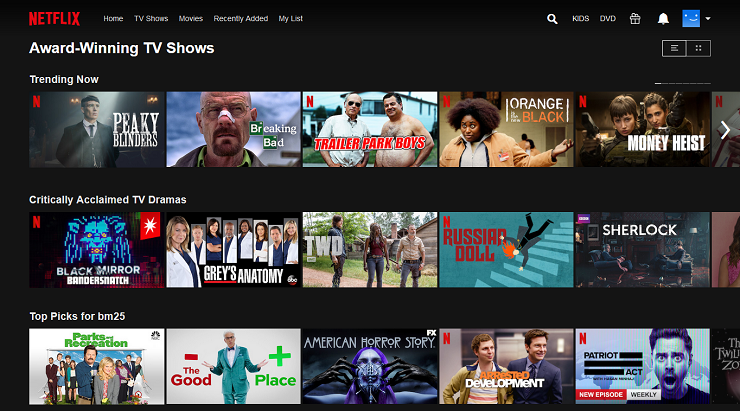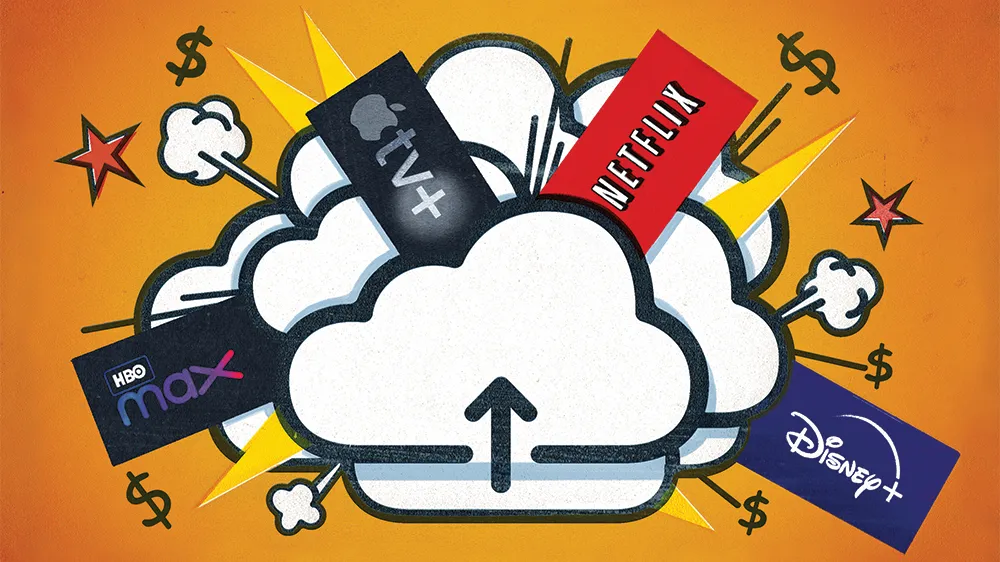Right decisions by the streaming giant and poor content execution of rivals among primary reasons
Netflix is the go to place for streaming, boasting over 200 million subscribers worldwide and an ever expanding library of diverse content. It wasn’t easy for Netflix to become the reigning champion of streaming, especially with so many streaming services out to get a chunk of the streaming market. But Netflix not only prevailed against the onslaught, but emerged as the winner of the streaming war.
So, we take a look at the story of Netflix and how it became the ultimate destination for streaming.

From DVD rentals to streaming
Beginning as a mail-order DVD rental service in 1997, Netflix launched its streaming service in 2007, giving its customers the chance to watch TV shows and movies online. This proved to be a masterstroke as it gave audiences instant access to a large amount of popular TV shows and movies. Netflix also churned out original content like House of Cards and Orange is the New Black, giving audiences an alternative against typical cable TV.
With success comes competition
Netflix’s success did not go unnoticed by other media companies, who saw the potential of streaming as a new source of revenue and audience. Soon, Netflix faced competition from a number of rivals, who launched their own streaming services, with exclusive content and lower prices. Some of the major players in the streaming war include: Amazon Prime, Max, Disney+, Apple TV+ and others.
Amazing Prime is the most notable competitor of Netflix due to factors like its streaming being a part of the Amazon Prime membership. Exclusive shows like The Boys has also helped carve out a solid fanbase of Amazon Prime.
In the last few years, a plethora of streaming services started their operation, with Disney+ launched in 2019 and decided to bank on their Marvel Cinematic Universe and Star Wars library, Warners Bros Max that airs Game of Thrones and DC movies and TV shows. Apple also got in with their Apple TV+.
Rival services burdening viewers with mediocrity
With so many streaming services around, it looked like Netflix was about to be dethroned. All the other streaming services did well initially, churning out one show after another, with many receiving critical acclaim like Wanda and Vision on Disney+, House of Dragons on Max and Ted Lasso on Apple TV+. But this is where it got tricky for everyone.
The streaming services began to run out of steam as after the initial hits, most of the exclusive content were either mediocre or poorly received by both the fans and critics. And unlike Netflix, they couldn’t air third party content easily as most of the services catered around exclusive contents or their existing library, which did not give fans a whole lot of choices.
Also, the streaming market saturation hit such a point that it was really confusing for most viewers. For example, if you wanted to watch the Spider-Man movies, then you would need subscriptions of both Netflix and Disney+ as Netflix still has most of the old movies while Disney+ have the MCU ones, but even then confusion persists as Netflix also has an MCU Spider-Man movie!

The rebound to success
The streaming market fragmentation ended up working in Netflix’s favor. They continued to produce exclusive hit contents like Squid Game, Hellbound, The Stranger Things, The Queen’s Gambit and The Crown while boasting a diversified library of contents. Its expansion in the global market was also noteworthy as in addition to Hollywood movies and TV shows, viewers can also watch K-dramas, anime and content from around the world.
Netflix has also taken big gambles regarding gaming and live events, with Netflix games giving players the chance to play classic Grand Theft Auto games like San Andreas. Recently, Netflix signed a 10-year deal worth US$5 billion dollar with WWE to stream its flagship shows RAW and Smackdown, and other exclusive contents from January 2025.
All this helped Netflix take the lead as the biggest video-streaming platform, reporting a revenue of $8.83 billion in the fourth quarter of 2023, a 12% increase compared to the previous year. Subscriber count also grew by 13.1 million, much better than was expected.
Netflix’s streaming war victory proves that to survive intense competition, you have to fire from all cylinders.
Netflix went in with its best known for, creating must-see contents that pulled people to their screens. Viewers always appreciate the scope of choice, and Netflix has been able to do that.
But will the other streaming services just go away? Absolutely not. They are here to stay and even if Netflix is still the leader, we as viewers will always look for the best content in a streamline manner. The sooner the other streaming services realize that, the better it will be for the viewers, and for themselves.






















